Here at Lords Chimney, we take pride in putting the safety and satisfaction of our customers above it all. You won’t find experienced, professional sweeps like ours anywhere else, and we can provide you with the knowledge and advice you’re looking for to have the safest and most enjoyable holiday season yet.
Now, one key ingredient in hosting a successful Christmas gathering is a warm, blazing fire in the fireplace. That is unless your fire-building strategies always prove to be less than successful. If you want to avoid a smoke-filled living space, along with the countless other threats that accompany a poorly constructed fire, read up on some of our guidelines below.
Invest In An Inspection & Sweeping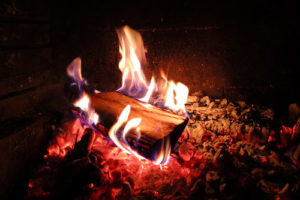
First things first, be certain to get your annual inspection scheduled before lighting any fires and have a sweeping completed if excess creosote was spotted in your flue. By getting an inspection done every year, you guarantee more efficient fires, and you avoid countless potential threats, such as house and chimney fires, carbon monoxide exposure, gas leaks, smoke back-up, and more.
Just be sure you book this maintenance with a team of CSIA Certified Sweeps to ensure you get the most knowledgeable and in-depth analysis possible. The crew here as Lords Chimney has trained with the CSIA, and we work with a number of other reputable organizations, as well, such as the NFI and the NCSG. We would love to set you upright, so book your inspection with our experienced staff today!
Now, what you use for fuel plays an integral part in how efficiently your fires burn, and it has an impact on the health of your chimney, too. It’s essential that you burn only well-seasoned firewood in your fireplace and nothing else besides it. Although it’s tempting to throw trash in there from time to time, especially in a time of year where you’re using a lot of wrapping paper, paper plates, plastic silverware, and more, but burning these materials increases the amount of creosote that forms in your flue, and it can create some pretty smoky fires, too.
It’s also important to avoid burning wet or unseasoned wood. If your fuel hasn’t adequately dried out, then acidic water will break down your chimney’s interior system, and your fires won’t burn as nicely, either. If you want heat and efficiency from your fireplace, then well-seasoned wood is the only thing you should be burning!
How do you know that your logs are ready for use? Well, if you season your own wood, it should be fine to burn after about six months of airing out in a well-protected, but open area outside. (Be sure to store it off of the ground, too!) If you are purchasing fuel, then some key characteristics to watch out for are.
- Logs that are lightweight.
- Pieces that make a hollow-sounding noise when smacked together.
- Logs that are split and dark on the ends.
- Wood that is cut to a shorter length.
Open Your Damper
Ever light a fire only to have smoke start pouring into your living room? This is unhealthy, uncomfortable, and it can leave you with an odor that is hard to erase. It’s a common mistake for homeowners to forget to open their damper before lighting things up, so be sure yours is open before getting your evening going.
Also, if your throat damper is rusting, eroding, or getting stuck all the time, consider upgrading to a top-sealing damper. These offer an effective seal with a rubber gasket, and they work alongside your chimney cap to keep out animals, downdrafts, and excess debris. Ready to make the switch? Talk with our team today.
Warm The Flue
It’s a good idea to light a roll of newspaper and hold it in your flue for a bit to get things primed and ready before lighting your fire. Why is this recommended? Well, otherwise you’ll be fighting the cold air in your chimney, which can overpower any smoke going up and push it back into your home. If you heat things up ahead of time, you could save yourself a lot of stress and hassle.
Study Fire Safety Tips
A fire in your home means there is always an increased risk of experiencing a gas leak, house fire, chimney fire, and more. Be sure you know the best ways to avoid a disaster in your home and have a plan in place should a fire occur. Map things out ahead of time and have your family practice different escape routes. It’s also important to pick a meeting spot outside of the home so that everyone knows where to meet up and check-in in the event of an emergency.
Also, remember to never leave a fire unattended. When it’s late and you’re tired, it may be tempting to simply fall asleep and let the flames die out on their own, but this has caused many accidents. It simply isn’t worth the risk. We also urge all of our customers to invest in multiple smoke and carbon monoxide detectors, as these are often the first or only things to offer any warning signs of danger.
Don’t Wait – Call Lords Chimney Today
If your chimney is in need of care, then there’s no time to lose. Count on the qualified and experienced technicians at Lords Chimney soon. We serve the counties of Harris, Fort Bend, Montgomery, Austin, Galveston, and Wharton, and we would love to help you out. Call today!
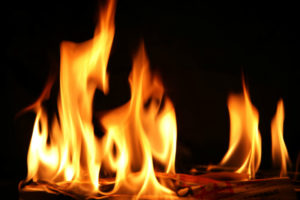 Lighting a fire in your fireplace can be a struggle if you have little experience building them. If you find yourself settled in for a cozy evening and want to enhance the atmosphere with a warm fire, then try out the top-down method for a long-lasting, low maintenance burn.
Lighting a fire in your fireplace can be a struggle if you have little experience building them. If you find yourself settled in for a cozy evening and want to enhance the atmosphere with a warm fire, then try out the top-down method for a long-lasting, low maintenance burn.
Picking Well-Seasoned Wood
Building a successful fire requires well-seasoned wood. Look out for the following things when picking out your fuel:
- Dark ends
- Split ends
- Lightweight
- Sounds hollow
- Shorter pieces
Purchasing well-seasoned wood is vital in creating an efficient fire. Fresh cut wood contains too much moisture. It uses up a lot of energy and causes your fire to smoke excessively! This means less heat for your home and more creosote build-up in your chimney. Creosote can trigger house fires and is not good for the health of your fireplace, as a whole. Ensure a strong burn by taking the time to find the best logs available. The extra effort will keep smoke away and will ensure your family and home stay as safe as possible.
Step By Step Instructions
There are countless benefits in building a top-down fire. The fire will never fall onto itself, less smoke is created, and re-fueling the fire isn’t necessary. All in all, it is a safer, more efficient, and highly convenient way to use your fireplace.
To build a successful top down fire, follow these steps.
- Step 1: Find you largest pieces of firewood that you can. Place these pieces on the floor of your fireplace, with the ends at the opening and the back. This will ensure better air flow through the wood pile, thus creating a more efficient burn.
- Step 2: Now, continue stacking! Pile more levels on your bottom row, making the pieces smaller and smaller as you go. You should end up with around 5 – 7 levels total and the pile should go no higher than half the height of your fireplace.
- Step 3: When you pile is built, you can add the kindling. Kindling consists of smaller twigs and branches that will easily ignite. Keep adding on smaller and smaller pieces. These are the items you will light first. You may also use crumpled up newspaper if you are looking for a very easy start to your fire.
- Step 4: Light your smallest pieces of kindling, and enjoy! Once your fire is lit, it should move down the wood pile with ease. All that is left for you to do is relax.
If your fireplace is in need of a tune-up, inspection, cleaning, repair, or more, please contact the certified experts at Lords Chimney. We can set you up with all of the appropriate tools, so your fireplace is ready to go for 2017. Start the year off right by investing in us today!
While regular cleanings and maintenance are an important part of fireplace upkeep, many homeowners fail to realize that the firewood they use can also impact the performance of their wood-burning appliances. Although the type of firewood you use is ultimately a personal preference, there are many different factors to keep in mind before making a large firewood purchase for the season.
Using unseasoned firewood can trigger lots of issues like excess smoke, less heat, and more creosote accumulation (which can then trigger unpleasant odors and structural issues). All in all, it’s well worth it to either season your own wood pile or take the time necessary to examine the wood you purchase, ensuring it’s adequately dried out and ready to burn.
Hard Woods vs. Soft Woods
All firewood can either be categorized as a hard wood or a soft wood.
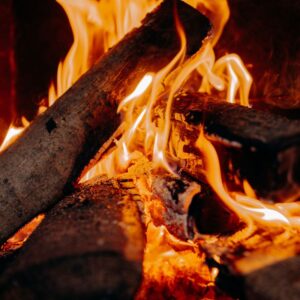 Hard woods: Hardwoods are heavy, dense woods from trees whose leaves change color in the fall. Because of this, hardwoods are known for creating more heat, having longer-lasting fires, and creating more coal beds. The most popular hardwoods are often varieties of elm, birch, maple, and oak.
Hard woods: Hardwoods are heavy, dense woods from trees whose leaves change color in the fall. Because of this, hardwoods are known for creating more heat, having longer-lasting fires, and creating more coal beds. The most popular hardwoods are often varieties of elm, birch, maple, and oak.- Soft woods: Softwoods are most commonly identified by their needle leaves, and includes species such as firs, spruces, pines, and evergreens. Softwoods are quick to ignite and produce more smoke than most hardwoods. Because they burn at a lower temperature, softwoods are often popular choices for fires during the milder temperatures of fall and spring.
Most homeowners favor hardwoods for the bulk of their fires, but many keep a small amount of softwood around to be used as kindling when starting a fire. Likewise, softwoods are extremely popular with those who use their wood-burning appliances for smoking meats due to their strong flavors.
Buying Wood Local: Things to Consider
Another factor to consider when shopping for firewood is where it was grown and harvested. Because tree-killing insects and bacteria can still reside on firewood, transporting wood long distances can expose local trees to dangerous infestations.
As a general rule, homeowners should try to buy firewood that was grown less than 50 miles from their home, while many experts agree that less than 10 miles is ideal.
Packaged, heat treated firewood is generally considered safe to move, and is ideal if you’re looking to purchase wood before an out-of-state camping trip. This wood is usually labeled with the USDA APHIS treatment seal.
Importance of Proper Wood Seasoning
Equally important to the type of firewood you buy is how long it has been seasoned for.
Seasoning is the process during which freshly chopped firewood is allowed to dry when exposed to sun and wind. This practice removes the majority of the water from the wood, reducing the moisture content from as high as 50% to as little as 15%.
Most firewood should be seasoned a minimum of 6 months, while many experts agree that when done properly the seasoning process can take up to a year. Even wood that has been cut from dead or fallen trees still needs to be seasoned.
Why is firewood seasoning important?
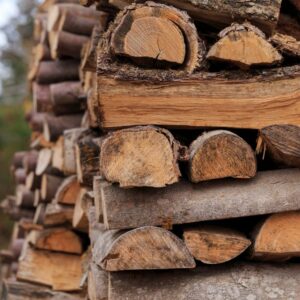 Avoiding Excess Smoke: When fresh wood is used in a fireplace, the flames are forced to use up a ton of energy burning through all that extra water. This triggers smoke to build up and pour out into your living room, quickly turning a cozy evening in into a disaster. Smoke in your home is also an issue when it comes to the health of loved ones. Toxins and fumes from your fireplace should never be inhaled, and they could trigger some serious illnesses.
Avoiding Excess Smoke: When fresh wood is used in a fireplace, the flames are forced to use up a ton of energy burning through all that extra water. This triggers smoke to build up and pour out into your living room, quickly turning a cozy evening in into a disaster. Smoke in your home is also an issue when it comes to the health of loved ones. Toxins and fumes from your fireplace should never be inhaled, and they could trigger some serious illnesses.- Lowering Creosote Accumulation: Burning unseasoned firewood triggers a more rapid accumulation of creosote. Creosote forms as fires burn in your chimney and, when there’s a lot of it, you face some serious risks. Too much creosote can easily cause a chimney fire to form, meaning you’ll be spending a lot of time and money on necessary repair jobs.
- Experiencing More Efficiency: When you burn fresher wood, you’ll experience less heat output from your fire, which isn’t good when you’re trying to save money on your monthly heating bills. While winters aren’t typically too harsh around here, that doesn’t mean we don’t experience lower temperatures. Many invest in a fireplace so that they have a better, more cost-effective way to heat their home when things get cool.
How To Pick Seasoned Firewood
It’s easy to make sure you’re picking the best fuel for your fires this holiday season. Look for logs that are lightweight, dark and split at the ends, and that makes a hollow sound when hit together. These surefire signs indicate that the wood has been adequately dried out – and that your fires will burn much better going forward.
What would should I avoid?
Although it may seem like an excellent way to recycle, old wood from decking, fencing, or playground equipment should not be used as firewood. Unlike regular firewood, these woods are typically treated with stains, paints, or other chemicals to make them more resistant to the elements. Because of this, burning pretreated wood can release a cocktail of poisonous substances into the air.
The Environmental Protection Agency (EPA) recommends to “never burn coated, painted, or pressure-treated wood because it releases toxic chemicals when burned.”
Storing Your Own?
Obviously, the most surefire way to get exactly what you want from the wood you burn is to season your own. Store it in a place that is open, yet protected, such as a wood shed with open sides and a sturdy roof, and let it sit for at least six months before putting it to use. Ensure the pieces are cut short and split on the ends to get things moving faster.
Need Fireplace Maintenance? Call On Us
If your wood pile is ready to go, and you’re ready to put your system to use, call us in for your annual inspection. Our team is CSIA certified and ready to serve, guaranteeing you a safer and better functioning system every single year.
There’s no time to lose – call or reach out online today!


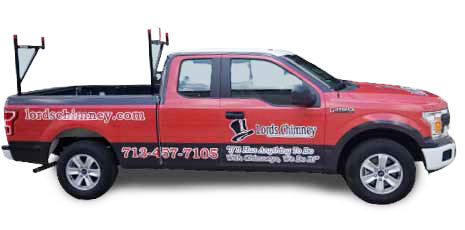
 Lighting a fire in your fireplace can be a struggle if you have little experience building them. If you find yourself settled in for a cozy evening and want to enhance the atmosphere with a warm fire, then try out the top-down method for a long-lasting, low maintenance burn.
Lighting a fire in your fireplace can be a struggle if you have little experience building them. If you find yourself settled in for a cozy evening and want to enhance the atmosphere with a warm fire, then try out the top-down method for a long-lasting, low maintenance burn. Hard woods:
Hard woods:  Avoiding Excess Smoke: When fresh wood is used in a fireplace, the flames are forced to use up a ton of energy burning through all that extra water. This triggers smoke to build up and pour out into your living room, quickly turning a cozy evening in into a disaster. Smoke in your home is also an issue when it comes to the health of loved ones. Toxins and fumes from your fireplace should never be inhaled, and they could trigger some serious illnesses.
Avoiding Excess Smoke: When fresh wood is used in a fireplace, the flames are forced to use up a ton of energy burning through all that extra water. This triggers smoke to build up and pour out into your living room, quickly turning a cozy evening in into a disaster. Smoke in your home is also an issue when it comes to the health of loved ones. Toxins and fumes from your fireplace should never be inhaled, and they could trigger some serious illnesses.